The Hidden Cost of Getting Monitor Ports Wrong
You have finally purchased your dream monitor, opened the package with a lot of enthusiasm, only to find out that your laptop does not have the appropriate port. At this point, you are scrambling to find adapters, fighting signal loss, or worst of all, sending your new acquisition back. Sound familiar?
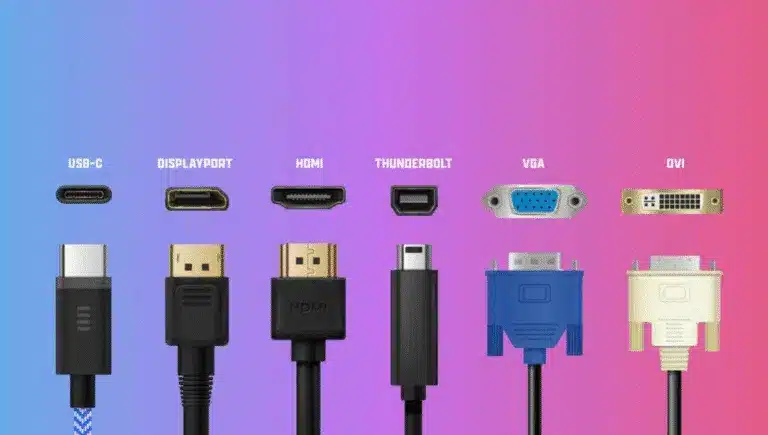
Whether you are a regular user watching Netflix, a gamer in search of the mythical 144Hz refresh rate, or a workaholic juggling with multiple displays, knowing monitor ports is not only a technical prowess but also money in your pocket and your sanity intact.
We will unravel the HDMI, DisplayPort, USB-C, and legacy connection puzzle in this guide and enable you to make intelligent choices that make your connection future-proof without incurring the unnecessary expense of upgrading.
Why Port Knowledge Saves You Time, Money, and Headaches
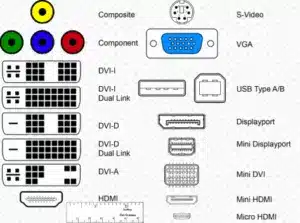
Monitor connections are important to get right and affect three key areas:
Compatibility First: The right port knowledge helps avoid costly errors. There is no longer a need to purchase cables twice, send monitors back, or accept poor adapters that add lag or lower image quality.
Performance Unleashed: they are called Performance Unleashed. Even though your old VGA may technically perform, it is only limiting your monitor to 1080p when you could be watching 4K HDR content with an actual HDMI 2.1 connection.
Future-Proofing Your Investment: Understanding port evolution: When you buy an investment, it makes sense to figure out how to upgrade it gracefully. Today, select monitors with a wide range of ports, and you can easily attach new devices tomorrow without having to start all over again.
Quick Guide: Common Monitor Ports & Who Needs Them
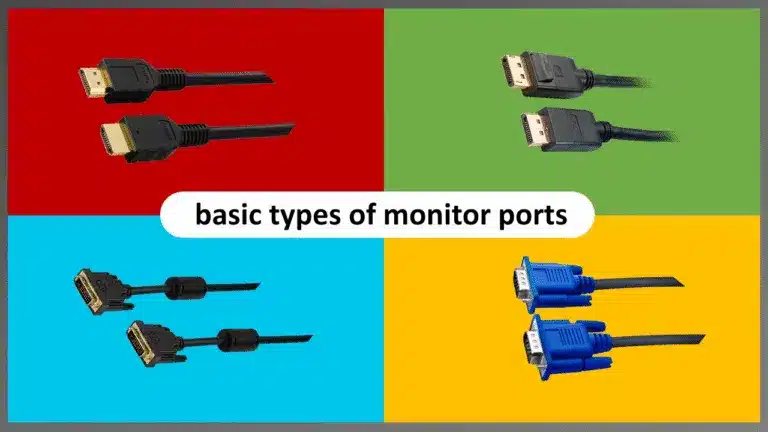
HDMI – The Universal Standard
Best for: general users, television connections, streaming appliances, and simple gaming.
HDMI is the most common connection that is supported. It supports video and audio on one cable, and hence installation is very easy.
- HDMI 2.0: 4K at 60Hz, HDR.
- HDMI 2.1: New standard 4K, 120Hz, 8K, 60Hz
- Audio Support: New standard 4K, 120Hz, 8K, 60Hz
- Ubiquity: Permanent on pretty much any laptop, game box, and streaming device.
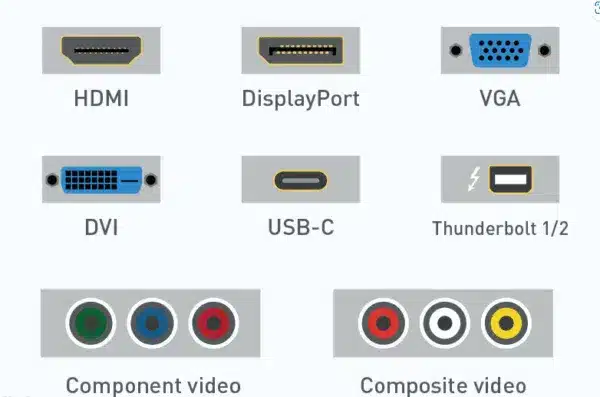
DisplayPort – The Performance King
Best for: Gaming with high refresh, workstations, and multi-monitors.
DisplayPort Beats HDMI, where it fails- Providing the bandwidth of the most demanding applications.
- Higher Refresh Rates: Supports 165Hz or 120Hz+ 1440p or 4K with ease.
- Advanced Features: Variable refresh rate (G-Sync/FreeSync) support.
- Daisy Chaining: Link more than one monitor using one port.
- Professional Grade: Designed to be used in color-sensitive applications and game rigs.
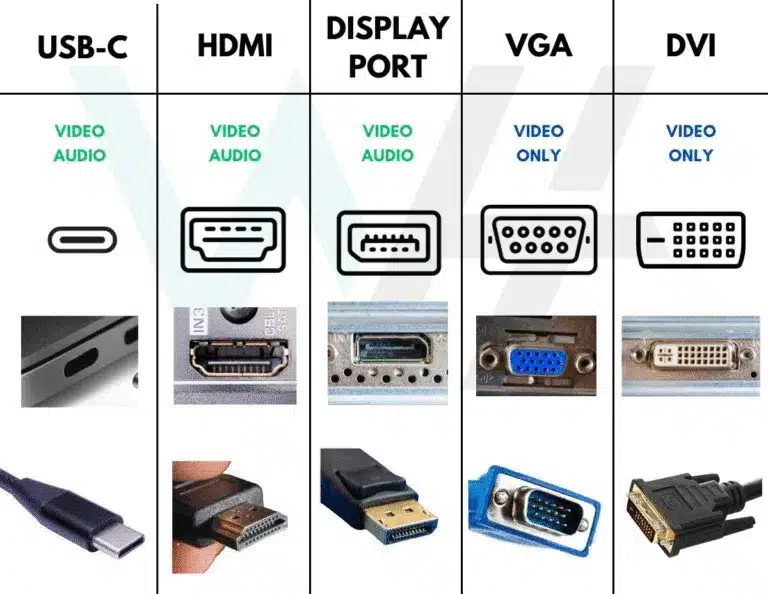
USB-C – The Future-Forward Choice
Best for: Current laptops, lean systems, one-cable systems.
USB-C is the next step of universal connectivity that is capable of delivering video, audio, data, and power.
- All-in-One: Video, audio, data transfer, and charging in a single reversible cable.
- Clean Setup: Cables become considerably less cluttered.
- Growing Adoption: The rule on new MacBooks, high-end Windows laptops.
- Power Delivery: Is able to charge your laptop as you drive the display.
DVI – The Reliable Workhorse
Best for: older systems, lower budget builds, professional applications.
DVI will still find some applications when connecting older devices or in applications where reliability is paramount.
- Sharp 1080p: usually provides a 1080p signal that is cleaner than older versions of HDMI.
- No Audio: Audio Only–needs audio plug-in.
- Legacy Support: This is necessary to connect to older PCs and equipment.
VGA – The Last Resort
Best for: Mean old hardware, emergency connection, use with a projector
on the emergency connection, compatibility with projectors. VGA must only be employed where there is no other choice.
- 1080p Maximum: It does not support 4K and above.
- Analog Signal: Subject to noise and loss of quality.
- Legacy Only: This is mostly used to connect very old computers or projectors.
Real-World Scenarios: Which Ports Fit Your Needs?
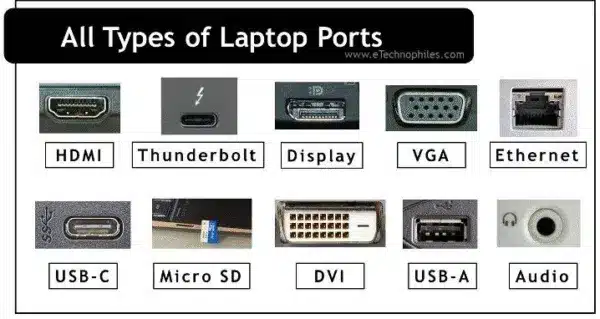
The Casual User
“I want to simply be able to plug my laptop into a bigger screen to watch Netflix and do simple work.“
Minimum Requirement: HDMI port on your monitor. Sweet Spot: HDMI 2.0 + USB-C monitor to deal with a laptop without extra cost, HDMI 2.0 4K streaming. HDMI 2.0 can support 4K streaming perfectly, so you do not need to pay extra to get HDMI 2.1. Sweet Spot.
The Gaming Enthusiast
“I require each frame per second and as smooth a ride as possible.“
Primary Choice: DisplayPort on your primary gaming platform (main gaming PC) and HDMI 2.1 on your second gaming platform (PS5, Xbox Series X). Pro Tip: Use DisplayPort when gaming on the PC at 144Hz+, and use HDMI when connecting to the console.
The Home Office Professional
“I want a clean desk and as few cables as possible, and as many as it can be productive.“
Ideal Setup: USB-C is the main connection to charge the laptop + video. Backup: HDMI is used to show presentations and other devices. Efficiency Increase: a single USB-C cable is used instead of a power adapter, video cable, and USB hub.
The Multi-Device Power User
“I have to get all of them attached: laptop, desktop, gaming console, tablet.“
Must-Have Combo: HDMI + DisplayPort + USB-C on your monitor.
Future-proof: Supports all your existing devices and adapts to all your new devices.
Flexible Switching: All your existing devices work with this, and all your new devices work with this.
Adapters & Accessories: When Ports Don’t Match
Your dream monitor does not necessarily have the right combination of ports. When adapters are effective–and when not:
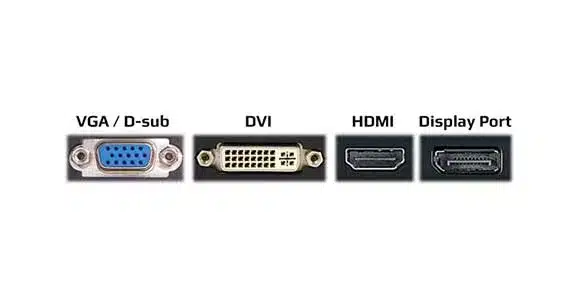
Reliable Adapter Scenarios:
- USB-C to HDMI 4K content (loss of minimum quality)
- DisplayPort console connections to HDMI.
- USB-C multifunctional hubs.
Avoid Adapters When:
- High refresh rate (use native DisplayPort) gaming.
- Working with color (doing it correctly)
- Chaining two or more adapters (compounds signal degradation)
Quality Matters: Spend on certified cables and adapters. Low-cost substitutes tend to add lag, lower the resolution, or crash at critical times.
Expert Insights & Pro Tips
“DisplayPort is technically better, but unless you are driving 4K high refresh rates, it usually does not count. HDMI does it all for the majority of users. – Computer Engineering Specialist.“
Gaming Setup Optimization:
- DisplayPort should be used with refresh rates higher than 60Hz.
- Reserve HDMI to consoles and other displays.
- Buy certified cables to prevent problems with compatibility.
- Keep the size of adapter chains to a minimum to avoid input lag.
Professional Workstation Advice:
- DisplayPort supports color-accurate and high resolutions.
- USB-C docking USB-C laptop-based workflow docking.
- Multiple ports: Several device-convenient ports that do not need to be unplugged.
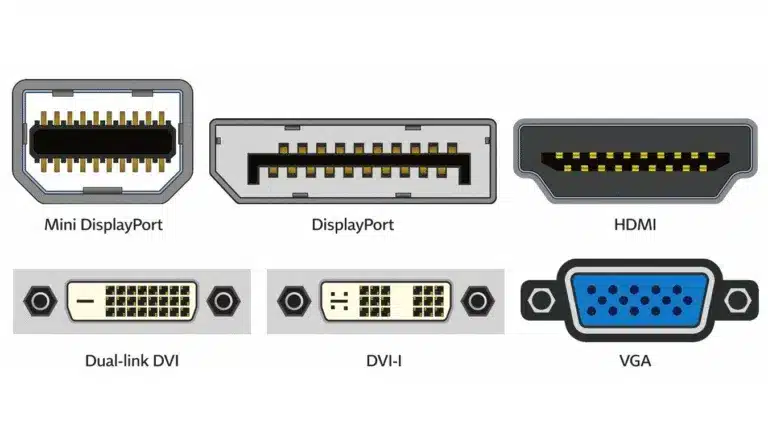
Future Trends: Staying Ahead of the Curve
The landscape of connectivity keeps changing at an accelerated pace:
USB-C Dominance: USB-C will eventually become the norm in laptops, tablets, and even desktop monitors. It is also versatile and can be used in lean designs.
DisplayPort Evolution: Recent versions of the DisplayPort have an even higher bandwidth, allowing 8K gaming and professional use.
HDMI Advancement: HDMI 2.1 and the next generation are driving the HDMI content and gaming up to 8K.
Smart Strategy: Purchase monitors that have several modern ports (HDMI 2.1 + DisplayPort + USB-C) so they can accommodate current hardware with an upgrade to newer hardware in the future.





